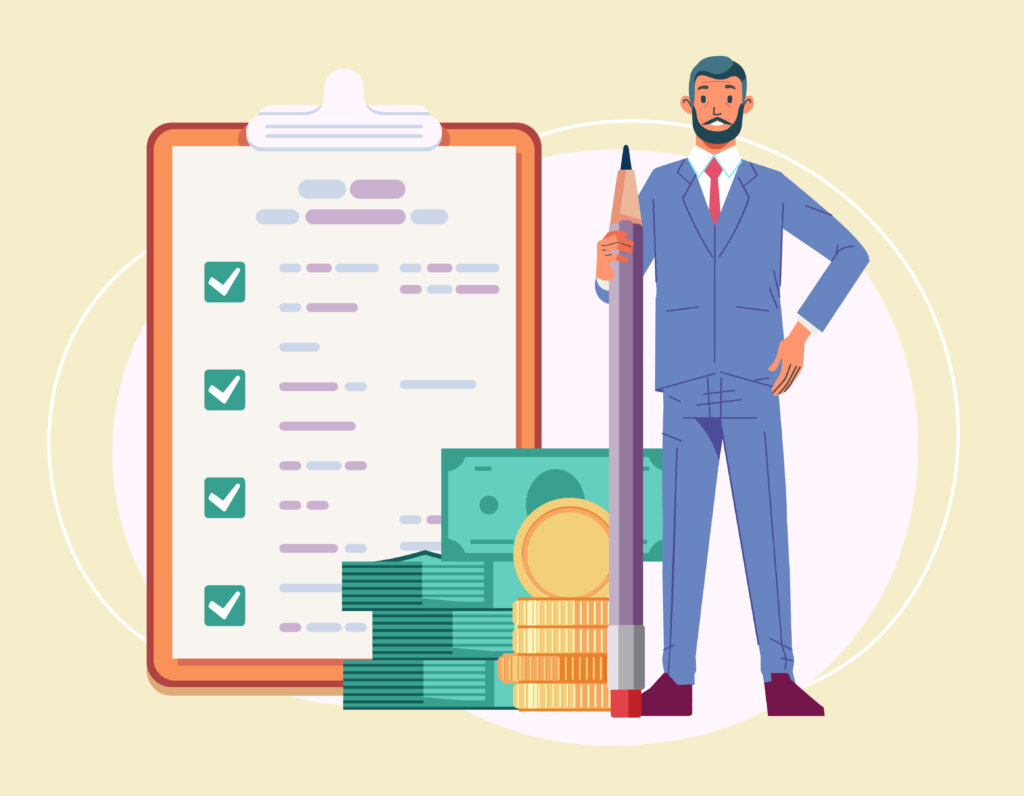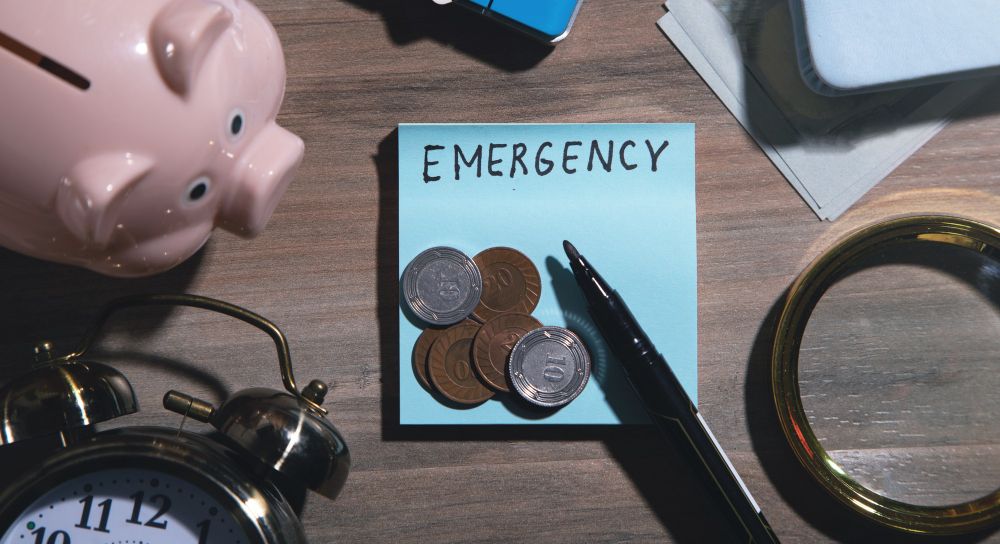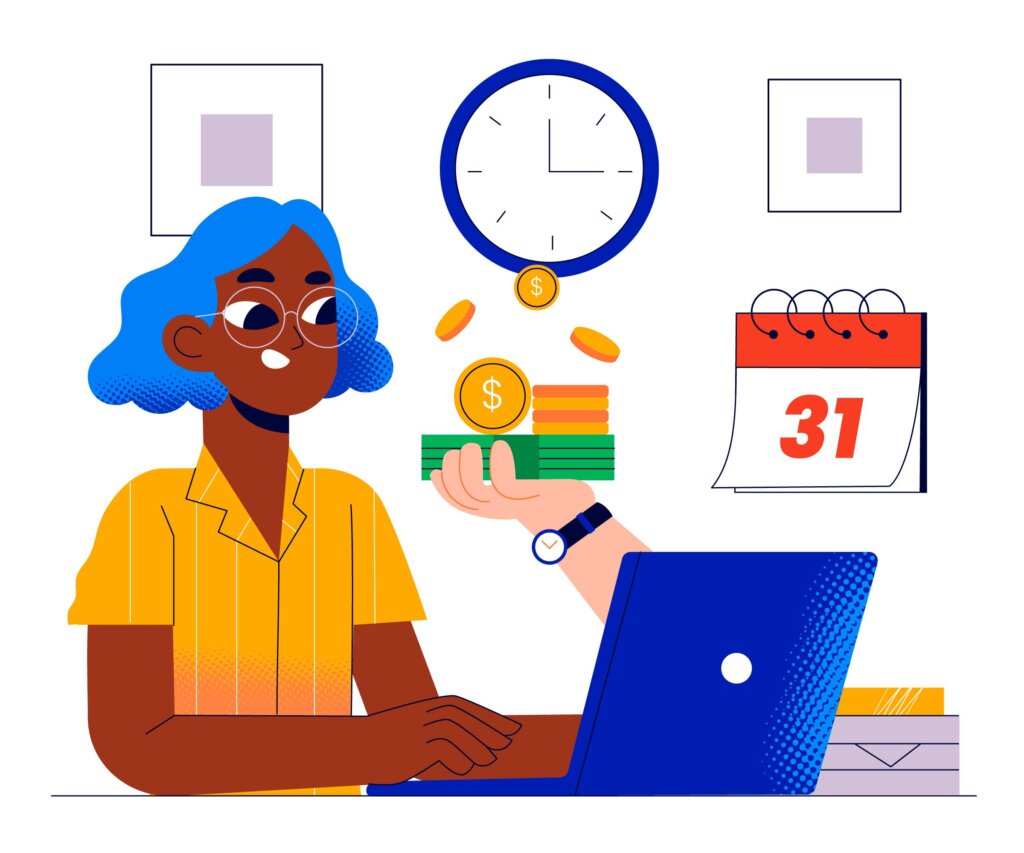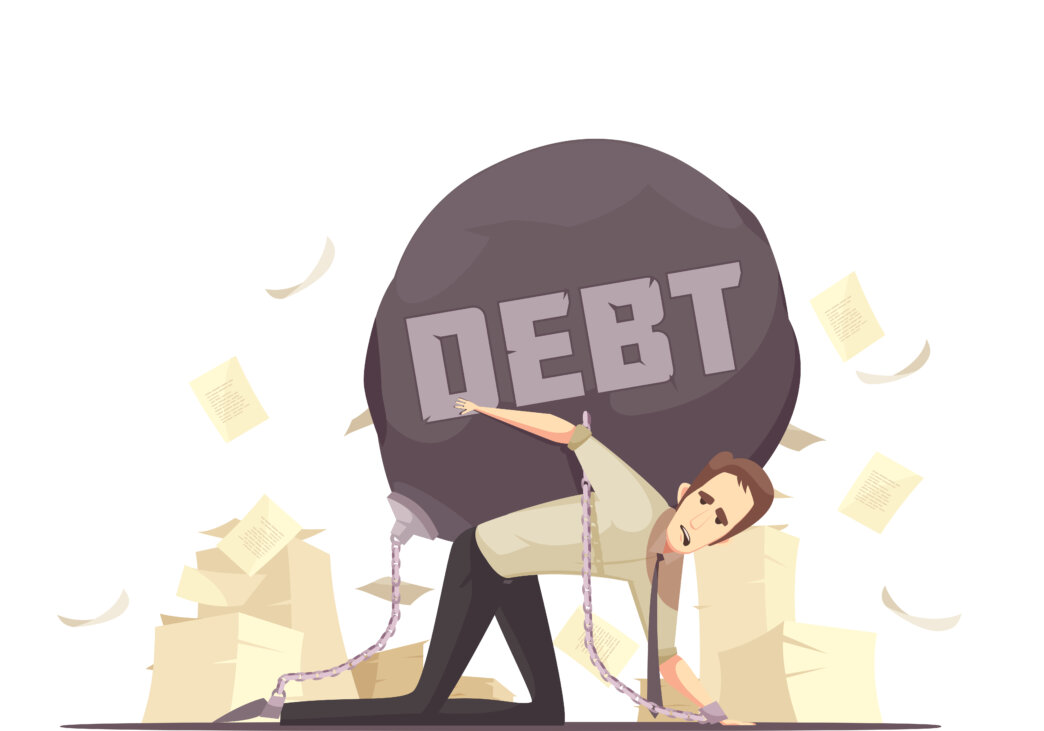The rising trend of unpaid debt in Kenya is reaching unprecedented levels, causing a massive dent in personal finances. Managing debt is a crucial step in gaining financial freedom.
According to recent data from the Central Bank of Kenya, defaulted loans have surged by Kes 30.6 billion in June 2022, hitting a staggering Kes 514.4 billion.
This alarming statistic highlights the severity of the problem and paints a bleak picture of the financial health of the people and the country. Not sure what the big deal is? Take a look at these other statistics:
#1.
According to the Central Bank of Kenya, the total gross loans and advances by banks stood at KSh 3.89 trillion, by August 2021. Personal loans accounted for KSh 364.2 billion.
#2.
According to the 2021 FinAccess Household Survey, 26.2% of Kenyan households have at least one member with a loan.
28.7% have a mobile loan, 23.4% have a bank loan, and 20.5% have a loan from a “chama.”
#3.
According to a 2021 report by the Credit Information Sharing Association of Kenya (CIS Kenya), the most significant outstanding loan balance in Kenya is personal loans
#4.
According to the Central Bank of Kenya, as of August 2021, Kenyan banks’ non-performing loans (NPLs) stood at KSh 385.2 billion.
#5.
The most common types of debt in Kenya are personal loans (45%), followed by credit card debt (20%), and mobile lending (13%).

Why should you care?
If you have ambitions to pursue a lifelong dream, there’s a high chance you’ll need to borrow some money now or in the near future. Whether you’ve already borrowed in the past or would like to borrow, understanding the impact of debt is critical to your financial well-being.
Excessive debt can pose a serious threat to your financial well-being, as it can hinder your ability to pay bills and put your property at risk of being repossessed or sold at auction.
As the old saying goes “Kukopa harusi kulipa matanga”…
Whether you’ve taken out bank loans, SACCO loans, or personal loans from mobile lenders, it’s crucial to exercise caution and avoid accumulating more debt than you can afford.
Despite the ease of obtaining loans, getting out of debt can be a daunting and challenging process that requires careful planning and disciplined financial management.
Don’t let debt hold you back from achieving your financial goals – take control of your finances today and secure a brighter financial future!
Getting a loan is NOT bad when you’ve answered these three questions:
- Will the loan lead to new income or revenue?
- Are you clear on how you’ll repay the loan on time?
- Are you great at budgeting and money management?
Failing to pay back loans not only affects your future borrowing opportunities but also has wider implications for the economy as a whole.
That’s why in this guide we want to help you become proactive by showing you how to take steps to manage your debt so you can protect your financial future.
STEPS TO MANAGE YOUR DEBT
Step 1: Know how much you owe
The first step is to assess your current financial situation by making a list of all your debts, including the type of debt, interest rate, and the amount owed.
You must know how much debt you owe, how much interest you are paying, and the due date.
This will give you a clear picture of exactly how much money you have to pay back and this can help you plan accordingly on what loan to pay first.
Most people have loans multiple loans, If you are an employee you can find that you have a SACCO loan or a bank loan, and on top of that borrow from mobile lending platforms such as Mshwari, Tala, Zenka, etc.

The average Kenyan household has a debt-to-income ratio of 55.7%, which means that for every Ksh 100 earned, Ksh 55.7 is used to pay loans.
Step 2: Prioritize Your Debts
After you have made a list, the next step is to prioritize them. You can prioritize the loans based on the interest rate, or the balance.
It is advisable to prioritize the debts/loans with higher interest rates, as they will cost you more money in the long run.
For example, if you have a logbook loan with a 3.5% interest rate and a staff loan with an interest rate of 1.5% per month. What would you prioritize?
Of course, pay the logbook loan first, this is because the interest rate is higher and it will cost you more in the long run. The more interest accrues on an existing loan, the more you will have to pay.
The rule of thumb is to make the minimum payment on each debt so you never fall behind, but invest as much money as possible in the debt with the highest interest rate.
Sometimes paying the loan with the highest balance may make more sense. For instance, if you want to qualify for another loan, paying off your existing loan will qualify you to get another loan.
Step 3: Create a Budget
Creating a budget will help you track your income and expenses and find where you can cut back on spending.
To create a budget:
- List all your sources of income, including your salary, and any side hustle
- List all your expenses including essentials such as rent and non-essentials such as entertainment.
By identifying and considering the money you spend on bills such as rent, food, school fees, and entertainment, you will get a clear picture of your finances. This will help you cut back on excessive spending and keep some money aside to pay your loan.
Need help in financial planning? Here is a way to help you create a budget and plan your finances.
The more you spend to pay your debt, the less money you have available for what’s important to you.

According to a survey by FSD Kenya, only 40% of Kenyans create a budget, and out of those, only 25% of Kenyans stick to their budget.
How to budget:
50% – For essentials such as food, housing, childcare, clothes, etc.
30% – Non-essentials such as entertainment, travel, and luxury items
20% – For debt repayment and savings
Step 4: Negotiate with Lenders
If you’re struggling to pay your loans, don’t be afraid to negotiate with your lenders. You can ask for a lower interest rate or a payment plan that suits your budget.
If you’re like 95.6% of Kenyans then you’ve never negotiated with a bank before and that’s a disadvantage because you’re missing a tremendous opportunity.
The 4.4% of Kenyans who do negotiate are likely to get lower interest rates and better lending terms that work best with their budgets.
Most lenders would be willing to work with you rather than risk losing your business. For example, you may be able to negotiate a lower interest rate or a longer repayment period.

Step 5: Consider Debt Consolidation
If you have multiple loans from different lenders with high interest rates, you can consider debt consolidation.
It involves taking out a loan to pay off all your debts, leaving you with only one loan to pay.
Converting many of your debts into one loan payment reduces the number of payments you have to make. Debt consolidation offers also might be for lower interest rates than what you’re currently paying.
For example, if you have a bank loan, a digital lender loan like Tala, Mshwari, and maybe rent arrears and you do not have enough money to pay all of them, you could easily take one loan to settle all the other loans.
Instead of dealing with different lenders, you will now deal with one lender and maybe get better repayment terms.
If you are struggling to pay multiple loans, debt consolidation can be your way out. Ngao Credit allows you to experience freedom with quick logbook loans of up to Kes 5 million.
Step 6: Look for ways to Increase Your Income
If you are struggling to pay your loans, one option is to increase your income. You could increase your income by starting a side hustle, asking for a salary increase, or looking for another high-paying job.
A side hustle is anything you do outside your normal working hours to get an extra income.

For additional income, there are different things you can try:
- being a freelancer
- investing in stocks or bonds
- joining a Chama or merry-go-round
- Selling items you no longer need eg. electronics
By having an additional income stream, you will have more money to settle your debts and also have more for savings and emergencies.
Step 7: Save for Emergencies
One of the main reasons why many people get into debt is because they do not have savings for unexpected expenses in case of emergencies.
Setting aside some money for emergencies is essential to achieving financial freedom because it gives you a cushion to fall back on in case of an emergency.

You should always try to build an emergency fund that can cover at least three to six months of your living expenses.
This will help you to deal with unexpected financial setbacks without having to rely on loans.
An emergency fund enables you to maintain your living standards for a few months if you lose your job. This was more evident during the Covid-19 pandemic when thousands of people lost their jobs.
Note: Emergency funds should only be used to finance actual emergencies, such as periods of unemployment or medical cases.
Step 8: Avoid Taking A New Loan
While it is important to manage your existing loans, you should avoid taking a new loan except if it is extremely necessary. You should always be mindful of your spending and only borrow what you need.
Taking additional loans can put you in a difficult financial position and make it difficult to repay your debts. If you find yourself in need of additional funds, speak with your loan provider about potential options before taking out another loan.
Step 9: Pay your debt on time
Time management and debt management typically go hand in hand because when you pay your bills on time, avoid late fees and additional interest charges.
Think about setting up alerts to remind you when your loan payments are due. This is because late payments have serious financial consequences.
If you do not make your payments on time, the loan will default. Loan defaults lead to a lower credit score. Failure to make further payments may result in additional fines and interest.
If the situation escalates, legal action may be taken and you may lose your assets as the lender has a right to repossess your assets to cover their cost.

Step 10: Seek Professional Help
If you are struggling to manage your debt, don’t be afraid to seek professional help.
Managing finances can be difficult especially if you do not have a financial plan.
You can find your bills accumulating and expenses going higher and this may lead you to seek a loan to cover the costs. However, seeking help to manage your finances can be the first step towards avoiding debts and gaining financial stability.
There are many resources available, including credit counseling services and financial advisors.
Also, there are many financial planning and budgeting apps that can help you track your expenses.
Final Thoughts
Managing your debt is a critical step to unlocking your financial freedom. By creating a plan and following the steps such as creating a budget, prioritizing payments, and negotiating with lenders, you can take control of your debt and begin to build a stronger financial future.
Always remember, that managing your debt is not a one-time fix, but an ongoing process that requires discipline and commitment.
With persistence and determination, you can overcome your debt and achieve the financial freedom that you deserve. So take action today and start managing your debt to create a brighter tomorrow.
Are you struggling with debt and would you like some expert advice? Click here


